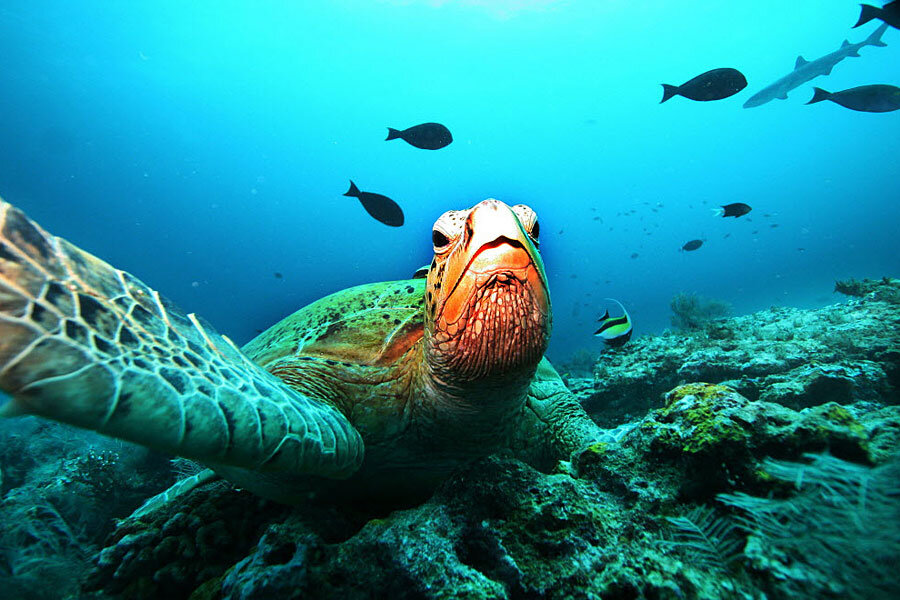Why not everyone's cheering New Zealand's massive new marine reserve
Loading...
Fish and other marine animals will soon have about 239,000 square miles of protection off the coast of New Zealand.
The planned Kermadec Ocean Sanctuary will prevent fishing and mining in the diverse marine region nearly the size of Texas.
New Zealand Prime Minister John Key announced the creation of the new preserve at the UN General Assembly in New York.
“The Kermadec Ocean Sanctuary will be one of the world’s largest and most significant fully-protected areas," Mr. Key said in his announcement.
"This is an area twice the size of our land mass and 50 times the size of our largest national park. It is truly a special place, and we want to keep it that way," Key said. "The new sanctuary will preserve the home of a huge range of species – millions of sea birds and whales and dolphins, endangered turtles and thousands of species of fish and other marine life will be better protected.”
With many regions of the ocean facing issues of overfishing, this announcement could come as a relief to conservationists and the marine animals themselves.
Many marine animals eat, reproduce and thrive around the Kermadec Islands.
"Together we've helped establish a large haven in the Pacific that will allow some of the ocean's most exploited and threatened species to not only recover but flourish,” WWF-New Zealand's Chief Executive Chris Howe told the New Zealand Herald. “This ocean sanctuary is a major conservation victory and is testament to many years of hard work by thousands of New Zealanders.”
But the thriving fish industry might not be so happy.
“With no forewarning from government, the industry needs time to consider the full implications,” Chairman of Seafood New Zealand told Reuters, expressing the $882 million industry’s surprise.
Solander Seafood and Fishing, a New Zealand fishing company, warned that this sanctuary could threaten any expansion of the tuna industry. The company’s managing director, Charles Hufflett, told Radio New Zealand that these protections arise from misunderstandings of the local marine life.
"They know an awful lot about moo cows and baa lambs, but nothing really about the different fish species," he said.
“We have only really just developed a domestic tuna industry of any size and they are taking away this valuable area,” Mr. Hufflett told the Wall Street Journal.
Tuna was the fourth largest seafood export for the island nation in 2013, reported Reuters.
But protected areas are not a new concept for the Pacific region. When the new regulations go into place in late 2016, the Kermadec Ocean Sanctuary will join the Australian Coral Sea Commonwealth Marine Reserve and the Pitcairn Islands Marine Reserve.
The area around the Kermadec Islands has been protected as a marine reserve since 1990, but the new plans will extend that zone to the 200 nautical mile limit of New Zealand’s Exclusive Economic Zone.
The planned sanctuary will protect marine life and, with mining bans, the topography of the underwater region itself.
"The Kermadecs contain the world's largest underwater volcanic arc, and the second deepest ocean trench at 10km deep – deeper than Mt. Everest is tall,” Key said, according to the New Zealand Herald.
“The mining resources are potentially very, very large there, because there are unknown quantities of silver and other resources there," he said. But, "on the other side of the coin, we are also trying to protect what is, from a geological perspective, a very important and significant part of the world."








